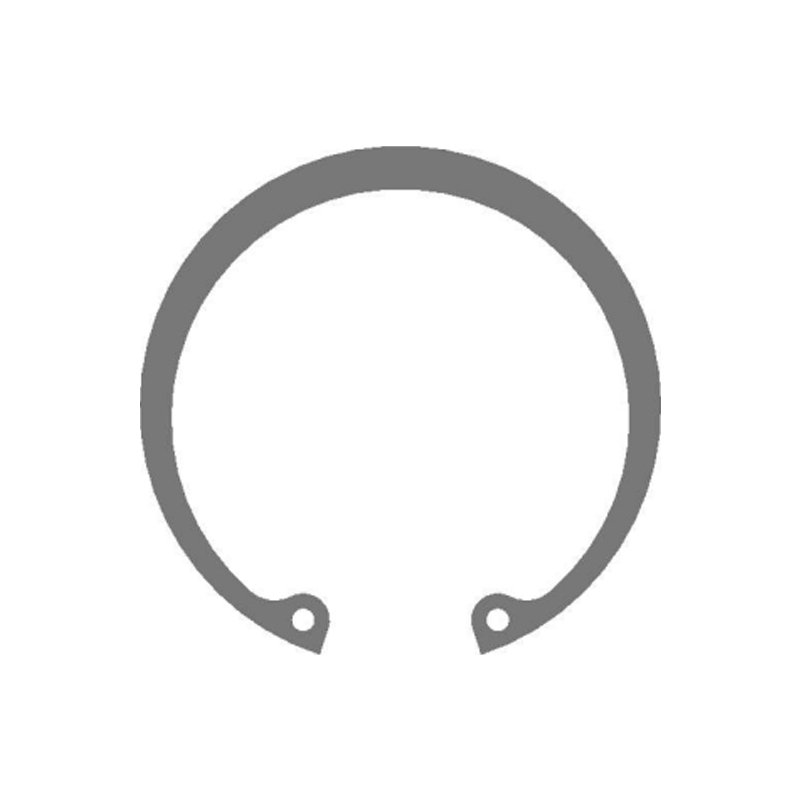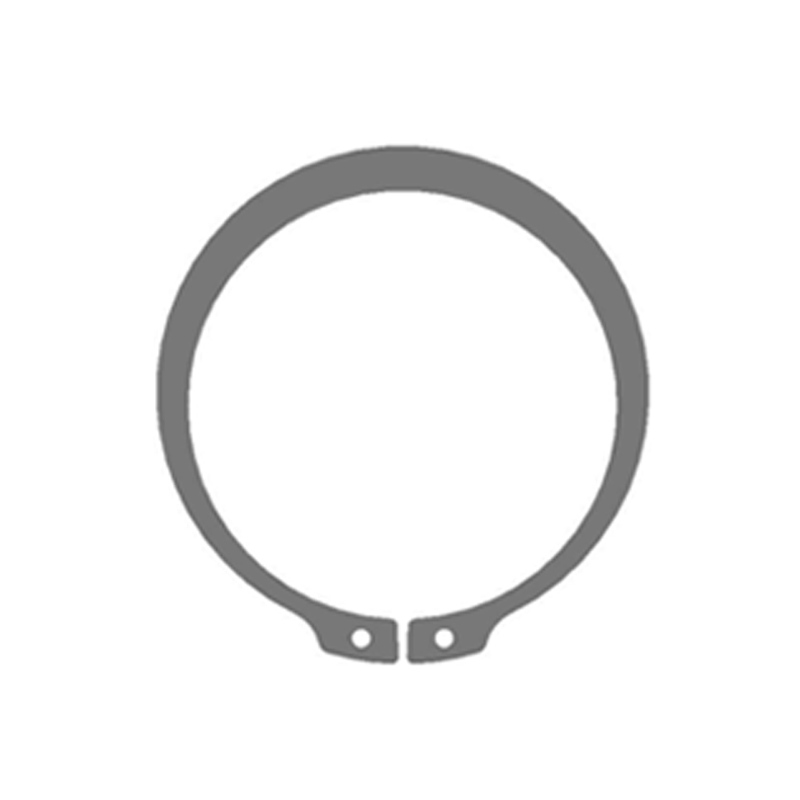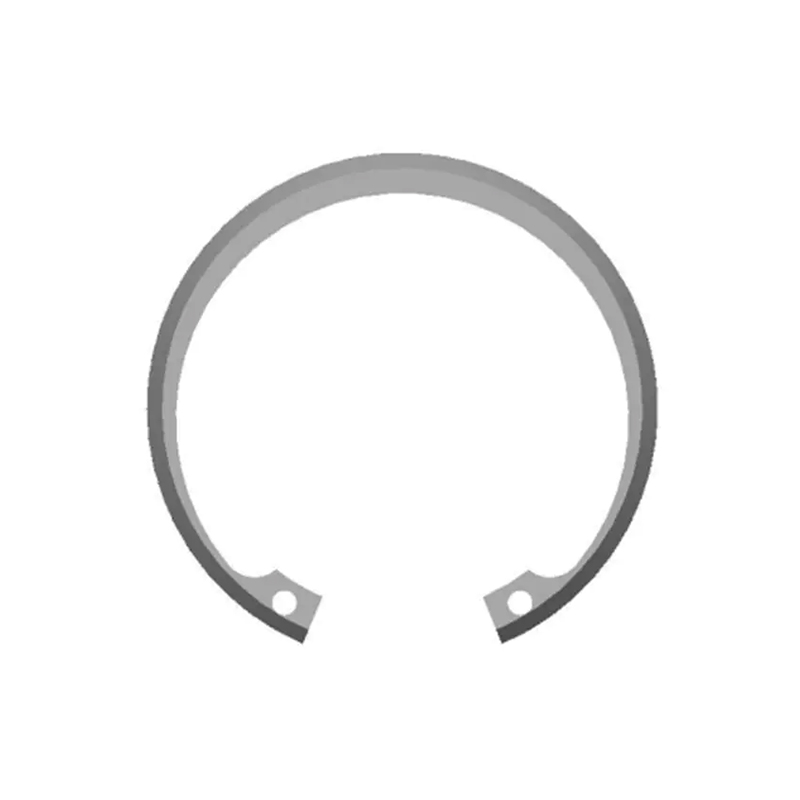External circlips are essential components in mechanical assemblies, serving as retaining rings that securely hold shafts, bearings, gears, and other cylindrical parts in place. They are widely used in automotive, industrial, and machinery applications. While external circlips may appear similar at first glance, they are manufactured in different types to meet specific performance requirements. The three main types—standard, heavy-duty, and stainless steel external circlips—differ in material, strength, corrosion resistance, and operational capabilities. Understanding these differences is critical for selecting the right circlip for a given application.
1. Standard External Circlips
Standard external circlips are the most commonly used type and are typically made from carbon steel or spring steel. They are designed to handle moderate loads and standard operational conditions. Key characteristics include:
- Material: Usually carbon steel or alloy spring steel.
- Load Capacity: Suitable for light to medium loads in general mechanical assemblies.
- Corrosion Resistance: Minimal; often require zinc plating or other coatings to resist rust.
- Applications: Ideal for applications where environmental exposure is limited and mechanical stress is moderate, such as household machinery, small motors, or light automotive components.
- Cost: Relatively low, making them economical for standard use.
Standard external circlips are reliable in typical operating conditions but may not perform optimally under extreme stress, heavy vibration, or corrosive environments.

2. Heavy-Duty External Circlips
Heavy-duty external circlips are engineered for applications with higher mechanical loads, frequent vibration, or demanding operational conditions. They are often made from high-strength spring steel alloys and may feature specialized heat treatments to enhance toughness. Key features include:
- Material and Strength: Enhanced steel alloys with superior tensile strength and fatigue resistance.
- Load Capacity: Designed to withstand high radial and axial forces, making them suitable for industrial machinery, heavy vehicles, and mechanical presses.
- Corrosion Resistance: May include protective coatings but typically rely on material strength rather than corrosion protection.
- Applications: Used in heavy-duty gear assemblies, hydraulic equipment, and machinery subjected to continuous or shock loads.
- Design Considerations: Thicker cross-sections or reinforced shapes help resist deformation under high-stress conditions.
Heavy-duty external circlips are ideal when reliability under high-load or high-vibration environments is critical.
3. Stainless Steel External Circlips
Stainless steel external circlips are designed for applications where corrosion resistance, chemical resistance, or hygiene standards are paramount. These circlips are made from stainless steel alloys, such as AISI 301, 304, or 316, depending on the required corrosion and chemical resistance. Key characteristics include:
- Corrosion and Chemical Resistance: Highly resistant to rust, oxidation, and chemical exposure, suitable for marine, food processing, medical, and outdoor applications.
- Mechanical Properties: While generally strong, stainless steel may have slightly lower tensile strength compared to high-strength carbon steel circlips. Heat treatment or alloy selection can improve durability.
- Temperature Resistance: Can maintain structural integrity in a wide range of temperatures, often exceeding the capabilities of standard circlips.
- Applications: Marine equipment, chemical machinery, food processing devices, medical instruments, and outdoor machinery exposed to moisture or corrosive elements.
- Maintenance and Longevity: Offers superior lifespan in corrosive or humid environments, reducing maintenance frequency.
Stainless steel circlips are the preferred choice when environmental conditions are harsh or when hygiene and chemical resistance are critical factors.
4. Summary of Differences
| Feature | Standard Circlips | Heavy-Duty Circlips | Stainless Steel Circlips |
| Material | Carbon steel / spring steel | High-strength spring steel alloys | Stainless steel (301, 304, 316) |
| Load Capacity | Light to medium | High | Medium to high |
| Corrosion Resistance | Low (coatings required) | Moderate | High (intrinsic) |
| Typical Applications | Household machinery, small motors | Heavy machinery, automotive, industrial presses | Marine, chemical, food, medical, outdoor |
| Cost | Low | Moderate | Higher (due to material and corrosion resistance) |
| Temperature Tolerance | Moderate | High | High, corrosion-stable |
5. Choosing the Right External Circlip
Selecting the correct external circlip depends on several factors:
- Load Requirements: For high-stress applications, heavy-duty circlips are preferable.
- Environmental Exposure: If the assembly is exposed to moisture, chemicals, or outdoor conditions, stainless steel circlips offer superior protection.
- Cost Considerations: Standard circlips are cost-effective for light-duty, protected environments.
- Longevity Needs: Stainless steel and heavy-duty circlips generally provide longer service life under demanding conditions.
- Assembly Constraints: Dimensional tolerances and shaft diameters must match the chosen circlip type to ensure reliable performance.
6. Conclusion
External circlips are vital components in mechanical assemblies, and their performance varies depending on type:
- Standard External Circlips: Economical and suitable for general applications with moderate loads.
- Heavy-Duty External Circlips: Engineered for high-load, high-vibration, or industrial machinery applications.
- Stainless Steel External Circlips: Ideal for corrosive, chemical, marine, or hygienically sensitive environments.
Understanding the differences between these types helps engineers, manufacturers, and maintenance personnel select the right circlip for specific mechanical requirements, ensuring reliability, safety, and long-term performance.

















